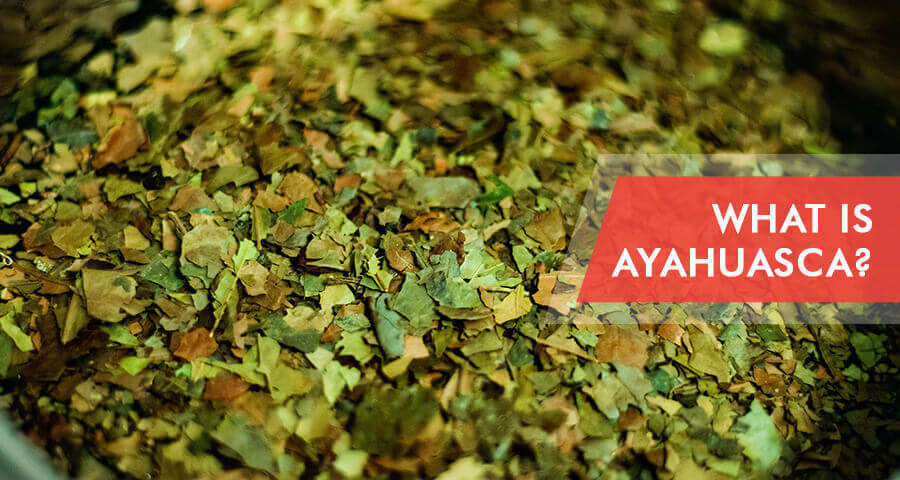
Ayahuasca tea is a tryptamine-based plant tea with psychotropic effects that the indigenous people of the Amazon have used for ritual and medicinal purposes for centuries, long before the time of the Columbian contact. This brew induces a transient state of altered consciousness during which people experience introspection, visions, enhanced emotions, and recollection of memories. In recent history, the use of tea has transformed and disseminated into a wider cultural milieu, even making its way into western culture.
Table Of Contents:
- What Is Ayahuasca?
- What Does an Ayahuasca Plant Look Like And Where Does It Grow?
- Brief History of Ayahuasca Use
- Is Ayahuasca Legal?
- How Is Ayahuasca Used?
- Is It Safe: Ayahuasca Dangers and Warnings
- Ayahuasca Experience: Effects of Acute Ayahuasca Use
- Can Ayahuasca Cause Addiction?
- Long Term Ayahuasca Effects And Dangers
- Ayahuasca Addiction Risk Groups
- How Long Do Ayahuasca Effects Last?
- Ayahuasca Addiction Treatment

Today, it is used in a ceremonial religious context by various syncretic religious movements as well as by various organizations that advertise an Ayahuasca retreat as a treatment for addiction and other conditions. However, what exactly is this tea? Is its use associated with any negative side effects? What history lies behind this spiritual psychedelic brew? And could its use for medical treatment of addiction and other mental health conditions be justified? Learn this and much more as in this article we tackle Ayahuasca.
Ayahuasca users should be aware of the dangers of consuming this tea as it can have life-threatening interactions with other concurrently used medications and substances.People should approach consuming Ayahuasca tea with caution due to its possible detrimental long-term side effects.
What Is Ayahuasca?
Ayahuasca pronounced as “ah-yuh-wah-skuh”, also known as yajé, Daime, and Vegetal, is a name used to describe the psychedelic infusion brewed from the vine of the Amazonian liana Banisteriopsis caapi alone or often in combination with over 90 admixtures of different plants. The most common variation of the ayahuasca recipe is that combining B. caapi with the leaves of Psychotria viridis. This combination produces a psychedelic Ayahuasca tea, which effect relies upon the intriguing interaction between the chemicals present in each plant.
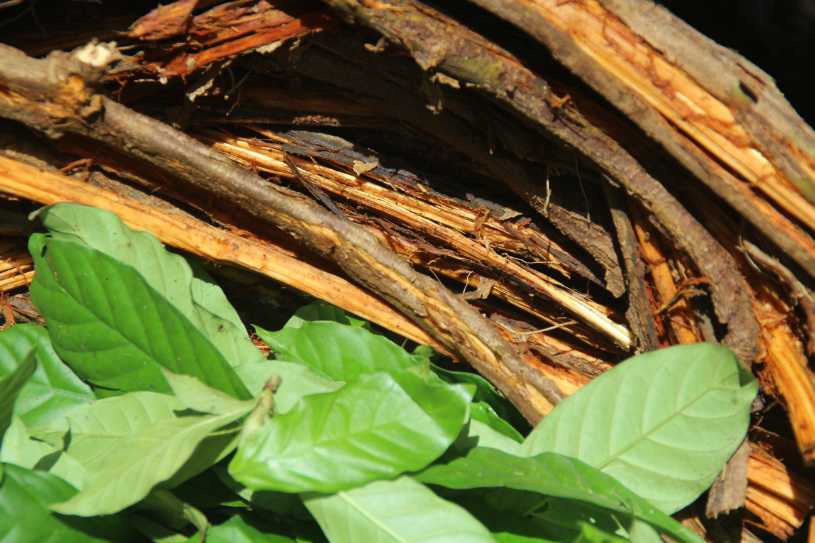
What Does an Ayahuasca Plant Look Like And Where Does It Grow?
It is noteworthy that the Ayahuasca plant does not exist, and the term refers to a brew made from a combination of B. caapi and, most often, P. Viridis. Therefore, if one were to refer to an “Ayahuasca plant incorrectly,” what they would be referring to in reality would be Banisteriopsis caapi. With this information out of the way, let’s discuss a little more about the Ayahuasca plant constituents.
- Banisteriopsis caapi is a South American liana or a long-stemmed vine that climbs on trees. B. caapi blooms in January, producing white or pale pink flowers.
- Psychotria Viridis is a shrubby, perennial, flowering plant that can be found all over central and south America.
Thus, the Ayahuasca plant is not a plant but a tea.
Chemistry of Interaction between B. caapi And P. Viridis
As mentioned above, the psychedelic properties of this tea come from the unique interaction of chemicals within Banisteriopsis caapi and Psychotria Viridis plants.
- Within its bark and stems, B. caapi contains a group of chemicals known as “β-carbolines” or “Harmala Alkaloids”. Specifically, it includes three of them: Harminetetrahydrohramine(THH) and Harmaline. Β-carbolines are reversible inhibitors of Monoamine Oxidase(MAO) Enzyme. MAO is an enzyme found within our bodies that degrades endogenous amine neurotransmitters as well as exogenous amines consumed through the diet. An example of such an amine is psychedelic N, N-dimethyltryptamine (DMT).
- It is within the leaves of P. Viridis that the psychedelic N, N-dimethyltryptamine(DMT) can be found.
So why is the combination of these two plants required to achieve the psychedelic properties of Ayahuasca tea? The answer to this question lies in the fact that DMT, found in the leaves of P. Viridis, is very rapidly metabolized in the liver and the intestines by Monoamine Oxidase(MAO) Enzymes, not allowing it time to produce its effects. With the help of β-carbolines, which inhibit the activity of MAO enzymes and protect DMT from being degraded in the liver and the gut, DMT is able to reach systemic circulation and the central nervous system to produce its transient psychedelic effects.
Brief History of Ayahuasca Use
Much of what is known regarding the historic use of this tea, comes from the research of the American botanist Richard Evans Schultes, who studied the uses of plants by the indigenous peoples of the Americans.
The origins of its use by the indigenous people of the Amazon basin are difficult to determine. Since Ayahuasca is consumed as a beverage, it leaves behind no archeological trace. Nonetheless, based on ethnobotanical speculation by Dr. Schultes, its use dates all the way back to between 500BCE and 500AD.
Ayahuasca was primarily used as a quintessential panacea in the ethnomedical armamentarium of the Amazonian shamans. The shamans viewed and consumed it as a “plant teacher” through which they learned about the medicinal properties of other plants as well as used it to cleanse both physical and spiritual ailments. In more recent history, several syncretic spiritual movements have arisen, blending Ayahuasca use with Christian and Afro-Brazilian religious beliefs, such as Santo Daime and the União de Vegetal.
Today, Ayahuasca is being used in Peru and other countries for the treatment of addiction and other psychological conditions such as anxiety and depression. These new modalities of use have revitalized interest in it and made it a focus of medical research for its potential medical uses.
Is Ayahuasca Legal?
Within the United States of America, Ayahuasca is considered illegal due to the fact that it contains N, N-dimethyltryptamine (DMT), a schedule I controlled substance.
However, There Are Several Exceptions to This Rule:
- In 2006, the U.S Supreme court case Gonzales v. O Centro Espírita Beneficente União do Vegetal stated that under the Religious Freedom Restoration Act, the United States government had to allow the members of União do Vegetal to import and consume this tea during religious Ayahuasca ceremonies.
- Similarly, the members of the church of Santo Daime, under the ruling of the Supreme Court, can import, distribute and brew this tea.
- The cities of Oakland, California; Santa Cruz, California; and Ann Arbor, Michigan have decriminalized “entheogenic” plants, including ones needed to brew this tea.
Similarly, the possession, sale, transport, and cultivation of the ingredients needed to make the tea are illegal in Canada, but the Church of Santo Daime in Montreal has a religious exemption.
However, the possession, sale, transport, and cultivation of the ingredients needed to make this brew are legal in Brazil, Costa Rica, Peru, Italy, and Romania.
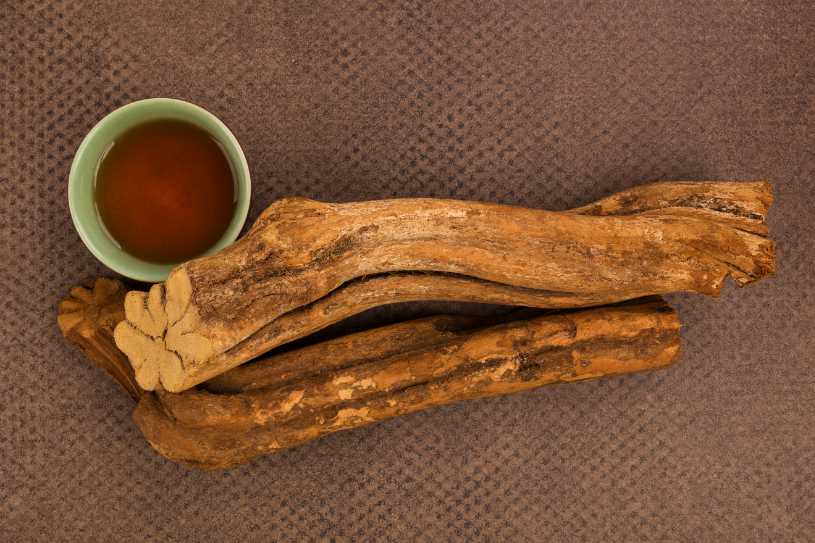
How Is Ayahuasca Used?
The most common Ayahuasca recipe calls for boiling the bark or the crushed stems of Banisteriopsis caapi and mixing it with the leaves of Psychotria Viridis or any other herb that also contains DMT. The preparation of this tea is also in concert with a shamanistic Ayahuasca ceremony. Regardless, the end result of the combination produces a decoction that has been used to aid spiritual practice as well as pharmacognosy, or plant-based medicine.
Traditional and Current Use: Ayahuasca Retreat and Ceremony
The traditional use of this brew is for an Ayahuasca ceremony and ritual uses. An Ayahuasca ceremony is conducted by a shaman or a vegetalistas to learn, diagnose, and heal. Today, people can choose to attend an Ayahuasca retreat where they can experience the ceremony first hand in the places where Ayahuasca is legal. During the actual Ayahuasca ceremony, usually occurring at night at a designated Ayahuasca retreat, an experienced shaman will prepare the brew and guide the participants through their spiritual journey.
Prior to participating in Ayahuasca Ceremony at an Ayahuasca retreat, people are encouraged to go on an Ayahuasca diet and:
- Abstain from recreational drugs for at least 2 weeks prior.
- Abstain from alcohol for a minimum of 48 hours prior.
- Abstain from sexual contact for a minimum of 48 hours prior.
- Ensure they are well hydrated.
- Avoid foods with MAOI inhibitors for at least 24 hours.
Modern Scientific Take On Potential Therapeutic Uses
Based on the various effects mentioned throughout the article, both acute and chronic uses of this tea have intrigued scientists. This has led modern medical research to focus on the potential therapeutic uses of this tea in the treatment of symptoms of substance use disorders, anxiety, and depression. Modern research has analyzed both molecular and psychological mechanisms through which this tea may act to improve symptoms of the aforementioned mental disorders.
Molecular Mechanisms
Modern research has elucidated that one of the active ingredients within the tea, N, N-dimethyltryptamine (DMT) has several effects within the Central nervous system that could be of potential medical use, such as promotion of serotonergic transmission and synthesis of factor that increases synaptic plasticity.
The other active ingredients in this tea, namely the Beta-Carbolines, have monoamine oxidase inhibitory(MAOI) functions and some of them are also able to inhibit serotonin reuptake similarly to selective serotonin reuptake inhibitors. This is similar to MAOIs and SSRIs that are currently employed for the treatment of mental disorders like depression and anxiety.
Psychological Mechanisms
The psychological mechanisms lie behind the ability of this tea to promote increased mindfulness and decentering. These give a person the ability to observe and reflect on their own thoughts and feelings in a detached, objective manner. Studies have shown that it is exactly the impairment of decentering and mindfulness that is linked with the emergence of mood disorders, generalized and social anxiety disorders, eating disorders, substance use disorders, and borderline personality disorder.
Whatsmore, currently employed cognitive behavioral therapy(CBT) focuses on allowing the person to view their thoughts and feelings in an objective manner.
Few Studies Have Analyzed the Possible Therapeutic Benefits of Long-Term Ayahuasca Consumption And Have Found that Patients Had:
- Decreases in the intensity of minor psychiatric symptoms
- Decrease in bodily pain
- Heightened sense of wellbeing, confidence, and optimism
- Increased life satisfaction
- Increased mindfulness
- Decrease in measures of depression, stress, anxiety, and panic
- Positive mood
- Increased acceptance and willingness to recognize, appreciate, and
- be open to other therapeutic interventions.
Thus, even though more research is needed to analyze the effects of Ayahuasca more carefully, some studies have demonstrated its effects in the treatment of substance use disorders, anxiety, and depression. From a psychological perspective, it works in much the same way that specific types of behavioral therapies work for several psychiatric disorders, enhancing self-acceptance and decentering. From a neurological perspective, it promotes emotional processing and memory formation.
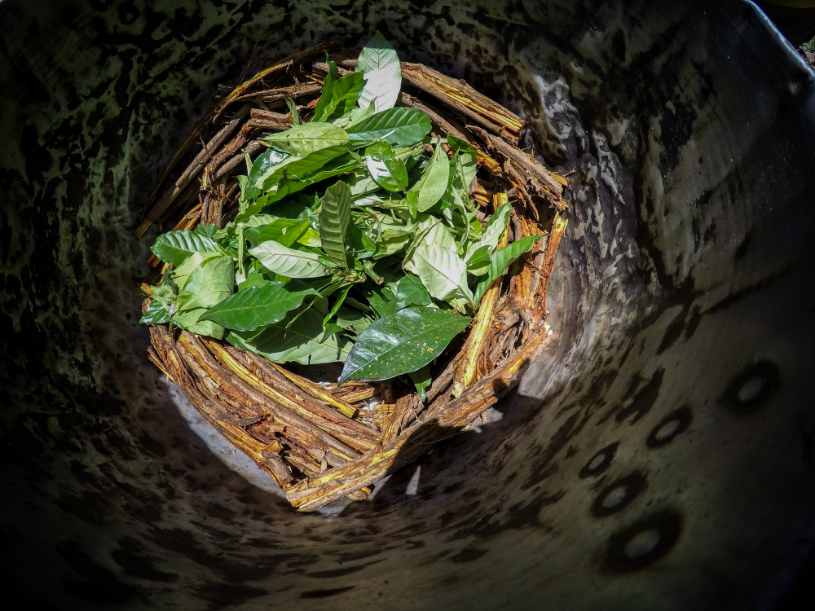
Is It Safe: Ayahuasca Dangers and Warnings
Ayahuasca users should be aware of the dangers of consuming this tea as it can have life-threatening interactions with other concurrently used medications and substances. Since the active ingredients contained within the tea act partly on serotonin transmission, it can produce Serotonin Syndrome with dangerous symptoms relating to altered mental status, neuromuscular and autonomic instability if the tea is consumed with other medications and substances that have serotonergic effects.
Thus Patients Should Be Aware Before Going on an Ayahuasca Retreat that Combining the Tea Aith the Following Medications Is Not Safe:
- Antidepressant drugs(MAOIs, SSRIs) or herbal medicine such as St. John’s Wort.
- Other drugs and medications such as Cold, Flu, and Cough medications; Antihistamine drugs; Sedative drugs; Amphetamines; Certain antihypertensive drugs, Sympathomimetic amines (including pseudoephedrine and ephedrine); Carbamazepine; as well as others.
Furthermore, people with psychiatric disturbances can have an increased risk of Ayahuasca dangers, as it may worsen their psychiatric symptoms.
Also, pregnant women or people with chronic heart conditions are not good candidates as tea use can worsen their conditions.
Thus, it is pivotal to disclose the list of all medical prescription, non-prescription, and recreational drugs a person uses, and history of any chronic health conditions or history of familial mental health illness to minimize the risk of Ayahuasca dangers.
Ayahuasca Experience: Effects of Acute Use
The effects of the tea usually take around 30 minutes to be felt and are thought to be dose-dependent. However, the individual variation among people is significant and depends on numerous factors ranging from the type of plant used, preparation of the brew, the shaman or vegetalista preparing the brew, a person’s unique physiology, and whether or not the recommendations of the Ayahuasca diet and abstinence were followed.
Subjective, Psychological Effects reach a peak after one and a half hours and are experienced in waves. The Symptoms Experienced Include:
- Burning sensation in the stomach
- Changes in skin sensitivity
- Pins and Needles
- Hot and Cold flushes
- Yawning
- Desire to close one’s eyes
- Visual imagery that is only experienced while eyes remain closed
- Increased sensitivity to music and sound
- Increase in thought speed
- Intense emotions
- Increased insight into one’s personal problems
Objective, Physiologic Effects Are Few:
- Nausea and vomiting
- Slight increase in Systolic and Diastolic Blood Pressure
- Very minute increase in heart rate
- Mydriasis or dilation of pupils
As one can see, the majority of side effects associated with the consumption of this tea are subjective. Whatsmore, the objective somatic symptoms and signs experienced are mild. However, Ayahuasca use is still not advisable as much is not known about its possible dangerous side effects with long-term use.
Ayahuasca users should be aware of the dangers of consuming this tea as it can have life-threatening interactions with other concurrently used medications and substances.
Can Ayahuasca Cause Addiction?
The degree to which Ayahuasca might lead to addiction and other drug-seeking behaviors is an important question. Unfortunately, no credible information exists that could provide an answer to whether or not Ayahuasca Addiction is a concern. With respect to N, N-dimethyltryptamine (DMT), its misuse and addiction potential are currently unknown, and it has not been shown to develop tolerance. Whatsmore, anecdotal evidence exists that both Brazilian and US religious groups who regularly consume this tea have decreased rates of alcohol, cocaine, and other drug abuse.
Addiction Signs
Although Ayahuasca addiction has not been shown to be prevalent, some other hallucinogenic and psychedelic drugs can have the propensity for addiction. The signs and symptoms that could characterize Ayahuasca addiction could include:
Possible Physical Signs of Ayahuasca Addiction Could Include:
- Increased heart rate and blood pressure
- Nausea
- Loss of appetite
- Dry mouth
- Sleep problems
- Uncoordinated movements
- Excessive sweating
Possible Psychological And Behavioral Signs of Ayahuasca Addiction Could Include:
- Intensified Sensory experiences
- Changes in the sense of time
- Spiritual experiences
- Feelings of relaxation
- Panic
- Paranoia
- Psychosis
These physical, psychological, behavioral signs, although non-specific, could hint at a possible addiction to a hallucinogenic substance. Regardless, recognition of the aforementioned signs and symptoms is the first step in identifying possible addiction to this psychedelic tea.
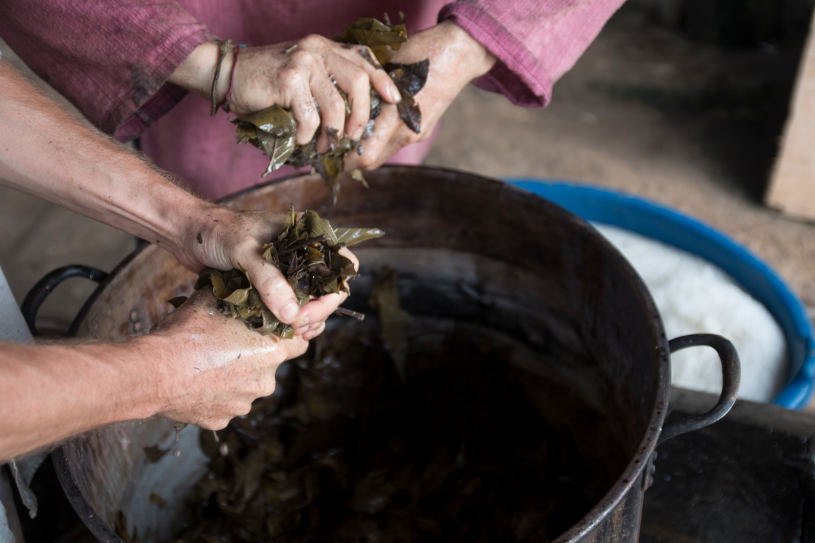
Long Term Ayahuasca Effects And Dangers
Long Term effects of Ayahuasca use are also unknown. However, one study analyzed the long-term effects of psychedelic drugs as a group and found that long-term use was not associated with negative long-term effects or dangers and was relatively safe with the proper preparation, supervision, and integration.
However, Negative Long-Term Side Effects Can Still Be Associated With Any Hallucinogenic Use, And They Include:
- Persistent Psychosis refers to a chronic psychiatric condition that is characterized by visual disturbances, disorganized thinking, paranoia, and mood changes.
- Persistent Flashbacks refer to recurrent spontaneous experiences of specific effects of the substance consumed, such as visual disturbances or hallucinations.
Therefore, people should approach consuming this tea with caution due to its possible detrimental long-term side effects.
Ayahuasca Addiction Risk Groups
No information regarding the specific risk factor or groups who are most at risk for Ayahuasca addiction exists. However, overall research regarding the risk factors for prevalent substance abuse and addiction includes:
- Familial or past personal history of substance abuse disorders such as alcohol, opioids, or benzodiazepines.
- Familial or past personal history of mental health disorders such as depression or anxiety.
- Interpersonal or interfamilial difficulties such as neglect, lack of support, marital discord, and unemployment.
- Presence in an environment where substance abuse is accepted, and there is pressure from peers towards substance use.
How Long Do Ayahuasca Effects Last?
As previously mentioned, effects start to be experienced within ~30 minutes of consuming the brew. The peak or the maximum intensity of symptomatic side effects is felt around one and a half to two hours later. Following this time period, the intensity of the experienced effects decreases gradually, returning to baseline levels between four to six hours after ingestion.
Furthermore, no definitive information exists on how long ayahuasca stays within the system, but information regarding how long N, N-dimethyltryptamine (DMT), the active ingredient found within this tea, is available.
- Trace amounts of DMT can be detected in urine within 24 hours.
- DMT can also be detected in hair follicles for up to 90 days.
- Detection of DMT within saliva and blood can only be done within 1-2 hours after oral ingestion, as DMT is rapidly metabolized and excreted.
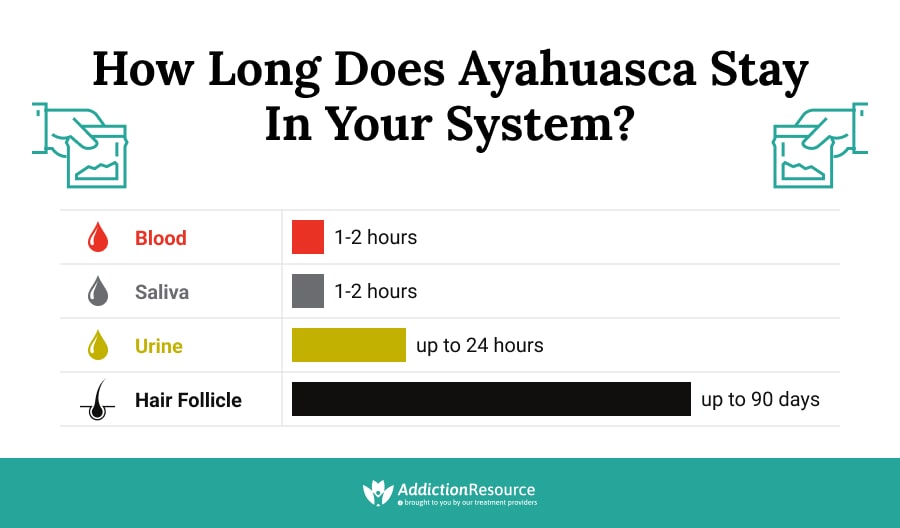
Ayahuasca Addiction Treatment
Even though addiction to this tea is uncommon, in the event that a case of addiction is encountered, treatment should follow general tenets of addiction therapy applicable to all substance addiction.
These include:
- Cognitive behavior counseling
- Pharmacotherapy
- Evaluation and treatment of concurrent psychiatric conditions
- Long-term follow-up to maintain adherence and prevent relapse
Related Topics
Hope Without Commitment
Find the best treatment options. Call our free and confidential helpline
Most private insurances accepted
Find Drug Rehabilitation Centers Near You Anywhere In the US
Addiction Resource team has compiled an extensive list of the top drug rehabilitation facilities around the country. Use our locator tool to find the best centers near you.
Page Sources
- Aday, J. S., Mitzkovitz, C. M., Bloesch, E. K., Davoli, C. C., & Davis, A. K. (2020). Long-term effects of psychedelic drugs: A systematic review. Neuroscience and biobehavioral reviews, 113, 179–189. https://doi.org/10.1016/j.neubiorev.2020.03.017
- Bieling, P. J., Hawley, L. L., Bloch, R. T., Corcoran, K. M., Levitan, R. D., Young, L. T., Macqueen, G. M., & Segal, Z. V. (2012). Treatment-specific changes in decentering following mindfulness-based cognitive therapy versus antidepressant medication or placebo for prevention of depressive relapse. Journal of consulting and clinical psychology, 80(3), 365–372. https://doi.org/10.1037/a0027483
- Domínguez-Clavé, E., et al., Ayahuasca: Pharmacology, neuroscience and therapeutic potential. Brain Res. Bull. (2016), http://dx.doi.org/10.1016/j.brainresbull.2016.03.002
- Fábregas, J. M., González, D., Fondevila, S., Cutchet, M., Fernández, X., Barbosa, P. C., Alcázar-Córcoles, M. Á., Barbanoj, M. J., Riba, J., & Bouso, J. C. (2010). Assessment of addiction severity among ritual users of ayahuasca. Drug and alcohol dependence, 111(3), 257–261. https://doi.org/10.1016/j.drugalcdep.2010.03.024
- Liester, M. B., & Prickett, J. I. (2012). Hypotheses regarding the mechanisms of ayahuasca in the treatment of addictions. Journal of psychoactive drugs, 44(3), 200–208. https://doi.org/10.1080/02791072.2012.704590
- McKenna, D. J., Towers, G. H., & Abbott, F. (1984). Monoamine oxidase inhibitors in South American hallucinogenic plants: tryptamine and beta-carboline constituents of ayahuasca. Journal of ethnopharmacology, 10(2), 195–223. https://doi.org/10.1016/0378-8741(84)90003-5
- Riba J, Rodríguez-Fornells A, Urbano G, Morte A, Antonijoan R, Montero M, Callaway JC, Barbanoj MJ. Subjective effects and tolerability of the South American psychoactive beverage Ayahuasca in healthy volunteers. Psychopharmacology (Berl). 2001 Feb;154(1):85-95. doi: 10.1007/s002130000606. PMID: 11292011.
- Riba, J., Valle, M., Urbano, G., Yritia, M., Morte, A., & Barbanoj, M. J. (2003). Human pharmacology of ayahuasca: subjective and cardiovascular effects, monoamine metabolite excretion, and pharmacokinetics. The Journal of pharmacology and experimental therapeutics, 306(1), 73–83.
- Rivier, L., & Lindgren, J. (2008). “Ayahuasca,” the South American hallucinogenic drink: An ethnobotanical and chemical investigation. Economic Botany, 26, 101-129.
- Soler, J., Elices, M., Franquesa, A., Barker, S., Friedlander, P., Feilding, A., Pascual, J. C., & Riba, J. (2016). Exploring the therapeutic potential of Ayahuasca: acute intake increases mindfulness-related capacities. Psychopharmacology, 233(5), 823–829. https://doi.org/10.1007/s00213-015-4162-0
- Wang, Y. H., Samoylenko, V., Tekwani, B. L., Khan, I. A., Miller, L. S., Chaurasiya, N. D., Rahman, M. M., Tripathi, L. M., Khan, S. I., Joshi, V. C., Wigger, F. T., & Muhammad, I. (2010). Composition, standardization and chemical profiling of Banisteriopsis caapi, a plant for the treatment of neurodegenerative disorders relevant to Parkinson's disease. Journal of ethnopharmacology, 128(3), 662–671. https://doi.org/10.1016/j.jep.2010.02.013


 Reviewed by:
Reviewed by:  Written by:
Written by: 

 FindTreatment.gov
FindTreatment.gov